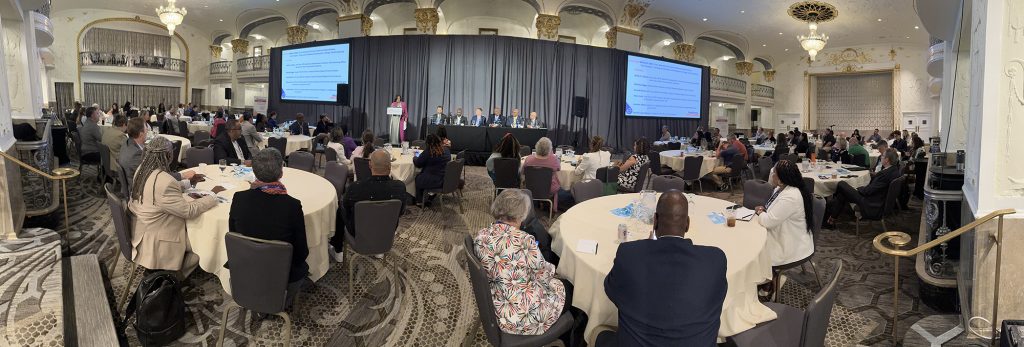Industry Comes Together to Share Critical Workforce Strategies
8/23/2024
More than 250 public transportation professionals convened in Washington, DC, Aug. 21-23, for APTA’s inaugural Workforce Summit, where they exchanged ideas, best practices, and strategies for recruiting, reskilling, and retaining the public transit workforce.
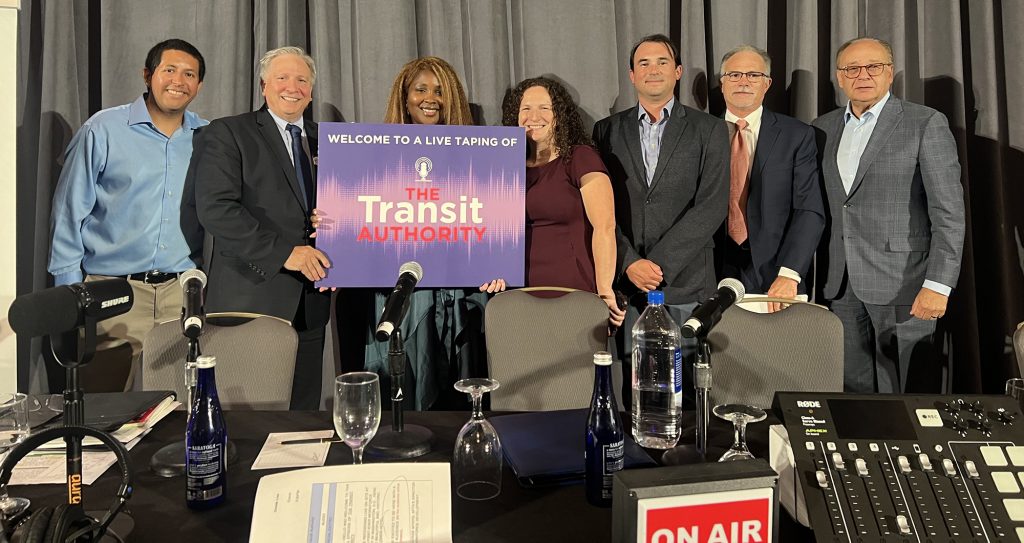
A special edition of APTA’s official podcast, The Transit Authority, was recorded live at the summit, Aug. 21. “Show Me the Money: Workforce Funding Resources” featured experts from USDOT, who discussed funding sources for workforce initiatives. Listen here.
At the Opening Ceremony, Aug. 22, APTA Chair Michele Wong Krause welcomed attendees and described how, when she became APTA chair last October, she identified three priorities for her year-long tenure: To make a compelling business case for public transportation funding; to continue advancing Diversity, Equity, and Inclusion in the industry; and to focus on new ways of attracting and retaining a skilled transit workforce.
“All three of these issues are connected,” she said. “It takes funding to recruit, train, and keep the best and brightest employees; and diversity, inclusion, and equity are essential elements, not just in reaching a broad pool of potential workers, but also in maintaining a productive workplace.”
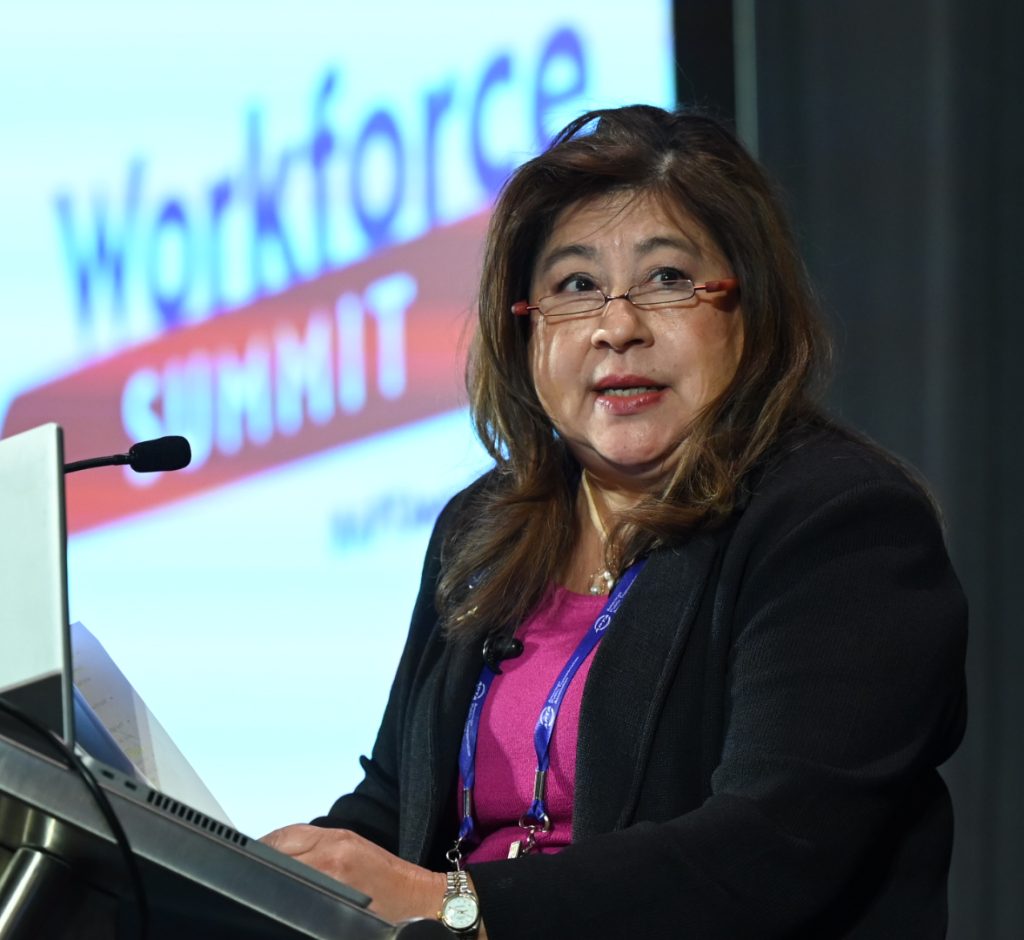
Wong Krause described how 96 percent of public transit agencies have reported workforce shortages, 84 percent of which said the shortage affected their ability to provide service. Forty-three percent of transit workers are over the age of 55, nearly double the percentage of the broader transportation sector. And, 35 percent of the time, applicants for transit jobs reject agencies’ employment offers, more than twice the rate for jobs across all industries.
“Public transportation’s future depends on how well we meet the workforce challenge. My hope is that this summit spurs bold new thinking about where and how we bring people into the public transportation family,” she said. “How do we think creatively to broaden our pool of potential workers? How do we streamline the hiring process to make it easier and faster to hire the people we need?”
To address these questions, APTA has a range of resources to assist its members, including Workforce Mini-Guides, the Transit Workforce Readiness Guide, the Transit Workforce Shortage Study, and the online APTA Workforce Clearinghouse. Wong Krause noted that APTA is continuing to develop more tools, including podcasts and webinars, designed to help members build, strengthen, and invest in their workers.
Wong Krause concluded by saying: “Happily, we have government partners who are committed to attracting, training, and retaining skilled and knowledgeable transit employees at every level. She then introduced FRA Administrator Amit Bose.

“All of us depend on rail systems in our daily lives, whether we take the train to work or benefit from the goods moved in our freight rail network,” said Bose. “It’s imperative that we support, develop, and retain the hardworking men and women who make this possible. At FRA, workforce development and worker safety are both key goals.”
FRA is working closely with Amtrak to cultivate the talent that needed to maintain and operate the U.S. passenger rail network. Consolidated Rail Infrastructure and Safety Improvements (CRISI) Program grants have been used to fund Amtrak apprenticeship programs in Pennsylvania and Washington, DC, for example, along with a grant program for the University of South Florida, Bose noted.
“In today’s fast changing technology landscape, continuing education for railroaders of all experience levels is absolutely necessary to close skills gaps and help workers adapt,” Bose said. “At FRA, we have a Transportation Technology Center in Pueblo, Colorado. We’ve also asked in the budget for a National Rail Institute. Something similar to what exists in transit with the National Transit Institute.”
Bose described the establishment of the National University Rail Center at the University of Illinois Urbana-Champaign, funded in 2012 with a $3.5M grant from USDOT. Also, the University of Texas Rio Grande Valley’s STEM program, which aims to create a pipeline of young people going into the public transportation profession. “It’s good for the industry and the country to provide Americans of all backgrounds with the opportunity to build a career and pursue their dreams in the field of railroading,” he concluded.
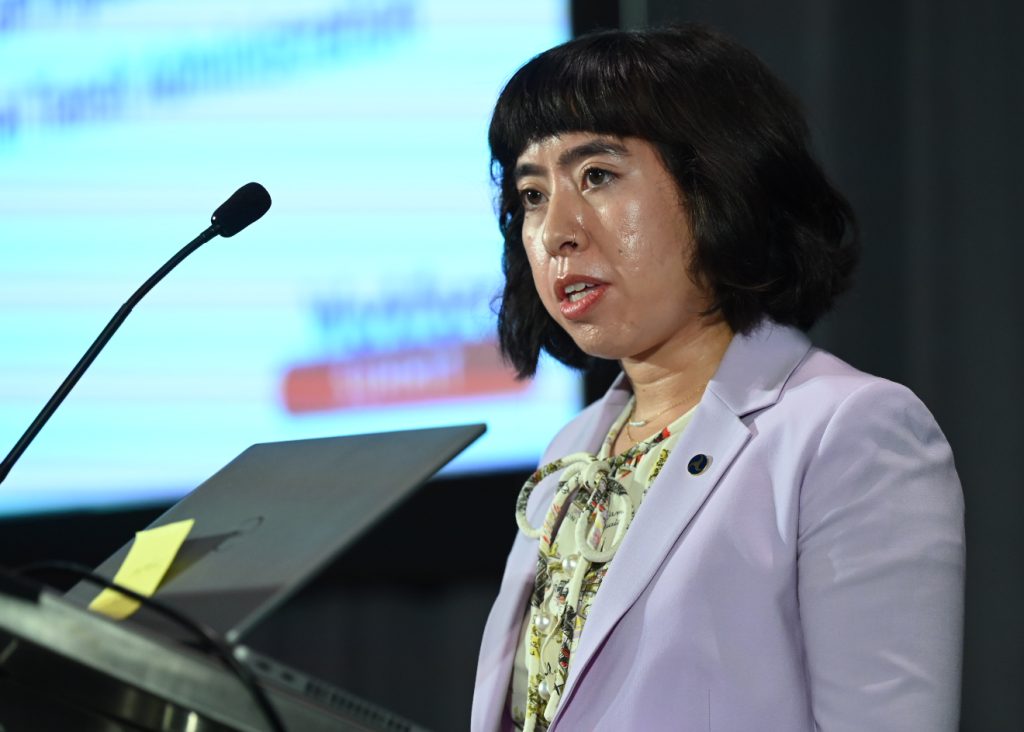
Catherine Teebay, special advisor for policy and program implementation at FTA, noted that the Bureau of Labor Statistics projects more than 200,000 job openings for bus drivers between now and 2032. “The nation’s unemployment rate stands at a low 4.1 percent, so the transit industry is competing with many other industries for a limited pool of workers,” she said. “Surveys show that pay and work schedules are the top reasons workers leave the transit industry. So those are two areas where we should all be directing some attention.”
APTA President and CEO Paul P. Skoutelas posed the question: “Where are we going to find the people to do what we need them to do?” He described how organizations often poach talent from each other. “To some degree, it’s very healthy because we want to see people move up, get rewarded, find new things, develop their own careers. But it puts more pressure on the hiring agencies or the hiring companies to keep up with the demand for talent.”
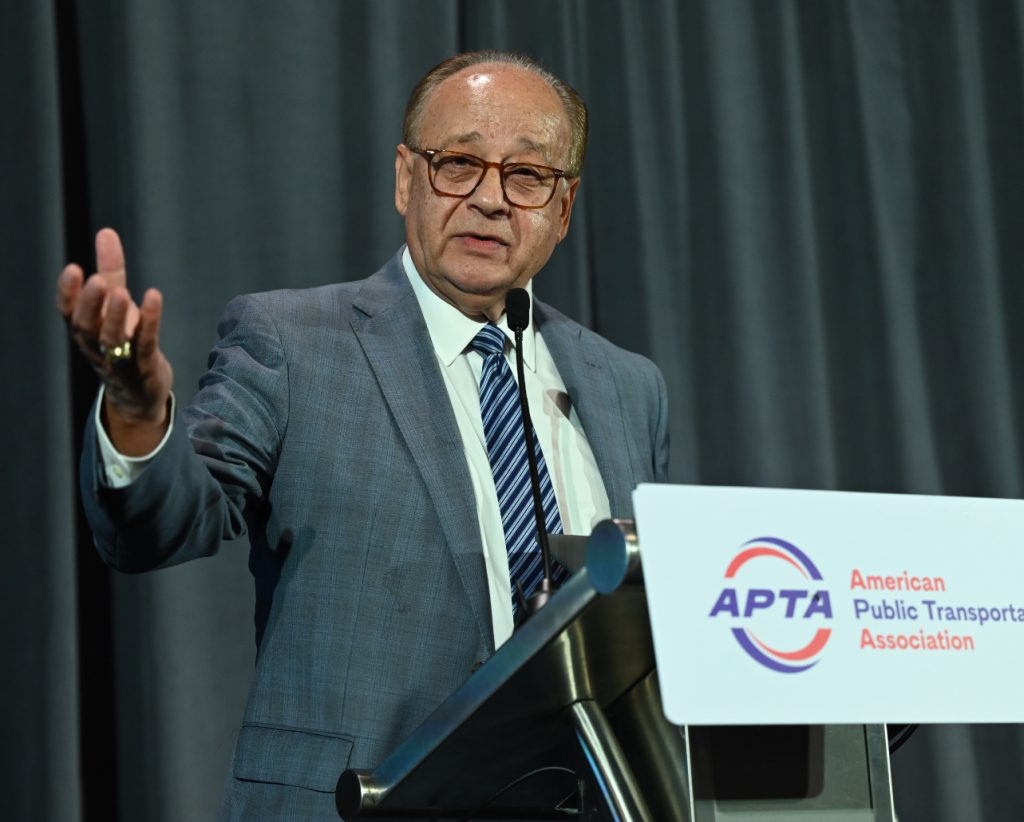
Skoutelas highlighted some of APTA’s professional development programs, including Leadership APTA and the Emerging Leaders program, which aim to develop professional talent and prepare future leaders for senior industry roles. “I’m proud to say many of our graduates in leadership are already occupying CEO positions in the industry,”
“The Bipartisan Infrastructure Law is enabling a lot of money to be spent investing in public transportation, which is a great thing,” Skoutelas said. “But we need the people to make it work. That’s the foundation. The people, the expertise, the human capital,” he concluded.
Skoutelas then introduced keynote speaker Randy Clarke, general manager and CEO, Washington Metropolitan Area Transit Authority, who described some of the workforce challenges and initiatives at his agency. Read what he had to say here.
View more images from the summit here.
